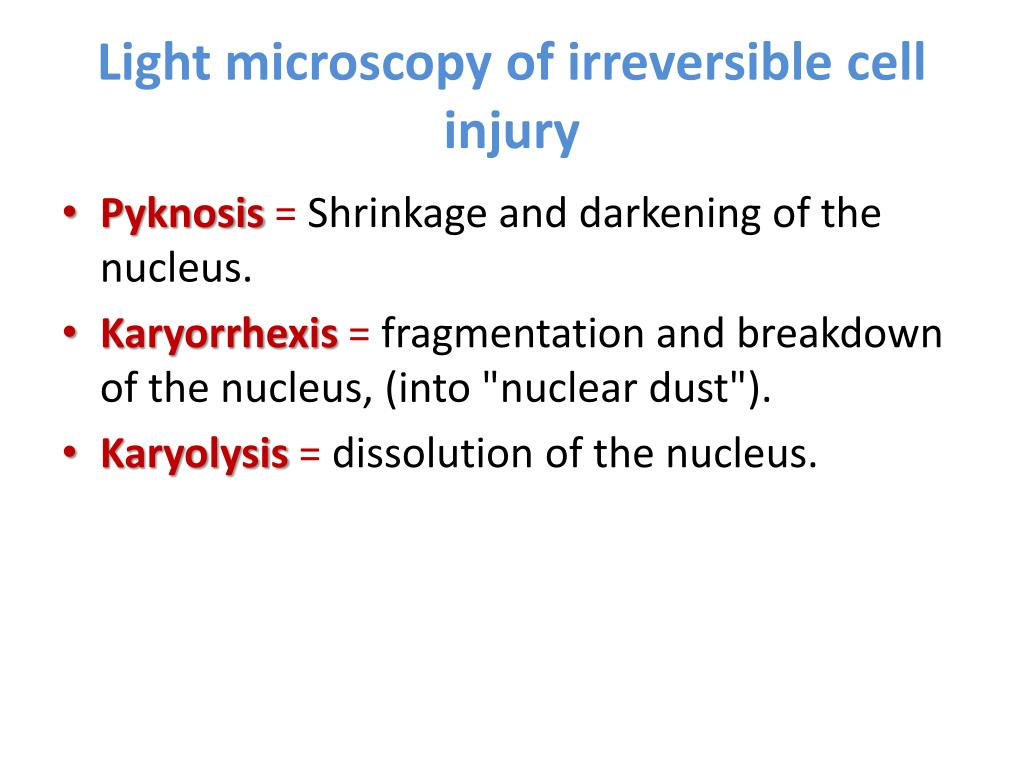
PPT Cell injury PowerPoint Presentation, free download ID1486569
Is an injury to a cell that causes morphological changes that are permanent, and typically to the inner mechanisms of the cell. Reversible cell injury an typically be stopped by removing or destroying the stimulus causing damage. Irreversible cell injury progresses and cannot return to normal state. Is typically the result of the beginning.

PPT Lecture Title Cell injury PowerPoint Presentation, free download ID3012663
These changes are reversible upon reoxygenation only when the large increase in intracellular Ca2+ content that accompanies the phospholipid depletion from other cellular membranes is prevented. This disorder in phospholipid metabolism is felt to be the critical lesion that produces irreversible cell injury in ischemia.
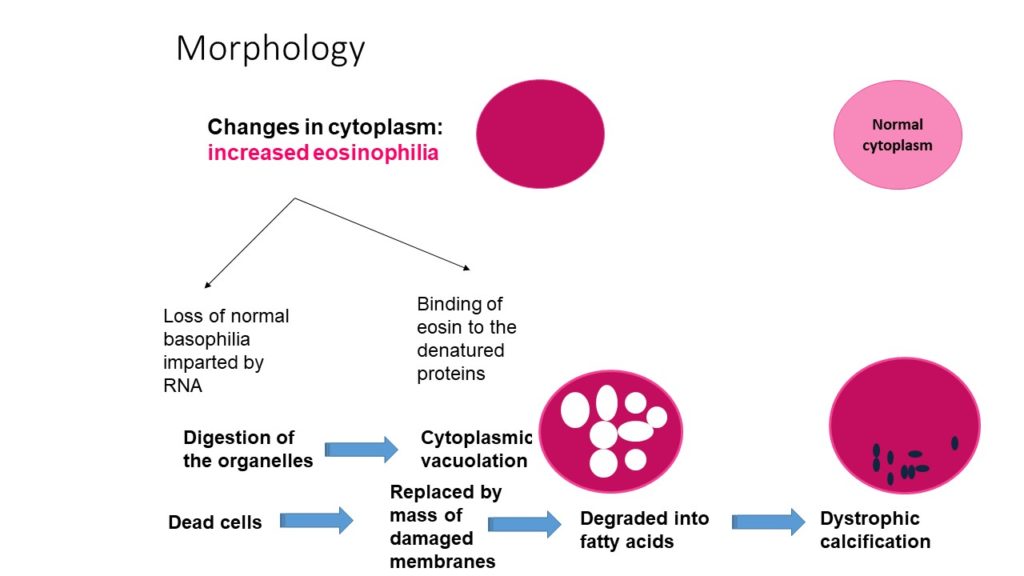
MORPHOLOGY OF IRREVERSIBLE CELL INJURY Cytoplasmic and Nuclear Changes Pathology Made Simple
Cell injury may occur by a variety of mechanisms and sources - endogenous (ischemia/inflammation) or exogenous (drugs/toxins) • Cell injury can be reversible or irreversible. • Reversible cell injury can result in changes which may recover when the cause is removed, or which may persist. •
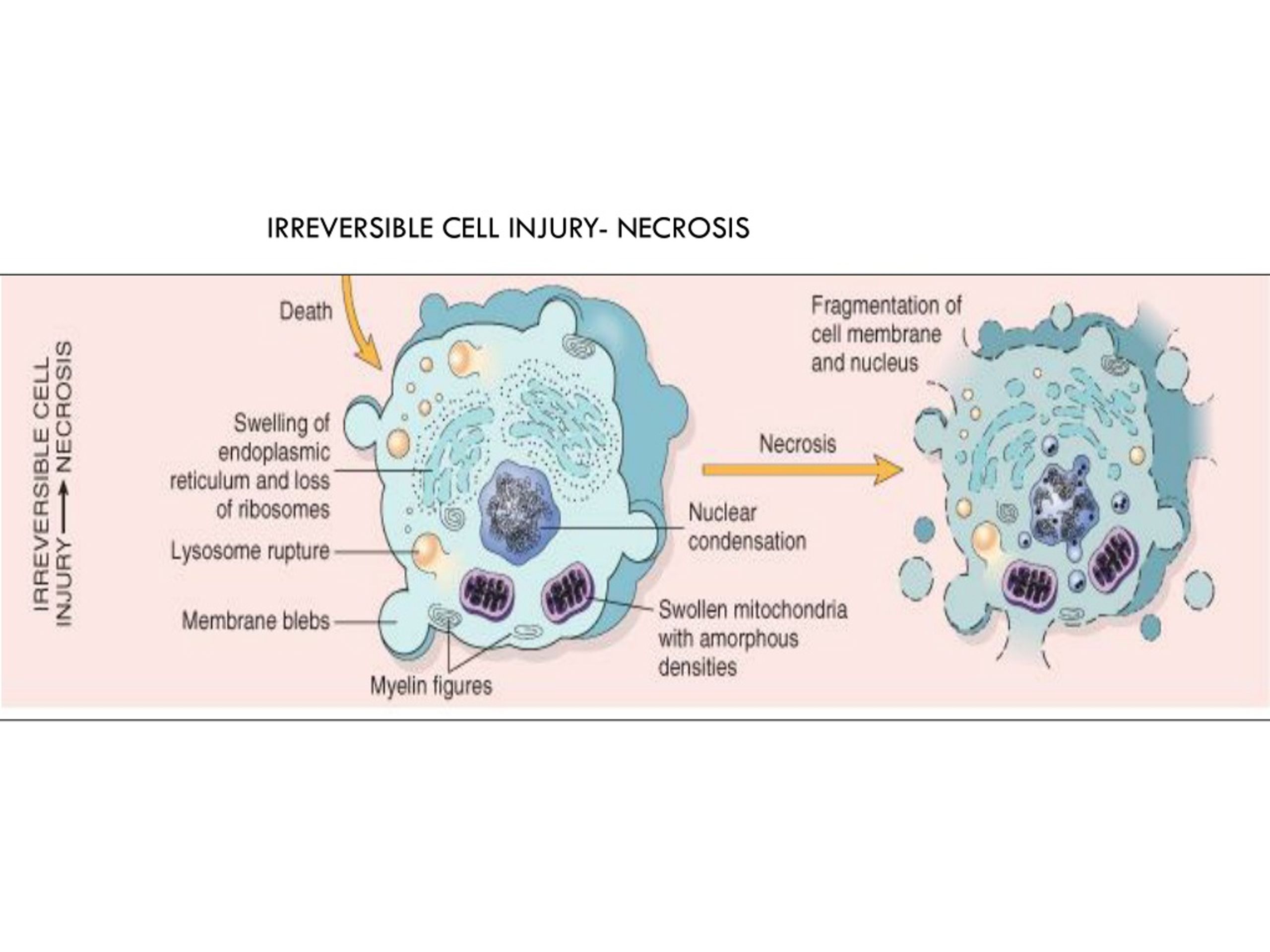
PPT Necrosis and apoptosis PowerPoint Presentation, free download ID586278
Answer: B. Irreversible cell injury. Irreversible cell damage is a significant membrane damage caused by influx of calcium. There is also an efflux of intracellular enzymes and proteins into circulation. Within the mitochondrial matrix there are marked mitochondrial dysfunction, mitochondrial swelling, and large densities.

PPT Hyperplasia can be divided into 1. Physiologic PowerPoint Presentation ID2450478
The cellular alterations that differentiate reversible cell injury from irreversible cell injury have been and are being studied extensively. Cell Death. The death of cells is an essential "value-added" part of embryonic development and maturation of the fetus and of homeostasis within populations of adult somatic cells. In these.

Irreversible cell injury cell injury cell death and adaptation Robbins pathology MCWA YouTube
Irreversible cell injury leading to necrosis denotes the "point of no return" from which a damaged cell is incapable of recovery and is committed to die. Functionally, this occurs when the physiology of an irreversibly injured cell is disrupted enough that homeostasis cannot be maintained. Once a cell has reached this state, cell death.

Irreversible Cell Injury Pathology YouTube
Cell damage. Cell damage (also known as cell injury) is a variety of changes of stress that a cell suffers due to external as well as internal environmental changes. Amongst other causes, this can be due to physical, chemical, infectious, biological, nutritional or immunological factors. Cell damage can be reversible or irreversible.

Difference Between Reversible and Irreversible Cell Injury Reversible vs Irreversible Cell Injury
Abstract. When cells are injured, one of two patterns will generally result: reversible cell injury leading to adaptation of the cells and tissue, or irreversible cell injury leading to cell death and tissue damage. When cells adapt to injury, their adaptive changes can be atrophy, hypertrophy, hyperplasia, or metaplasia.
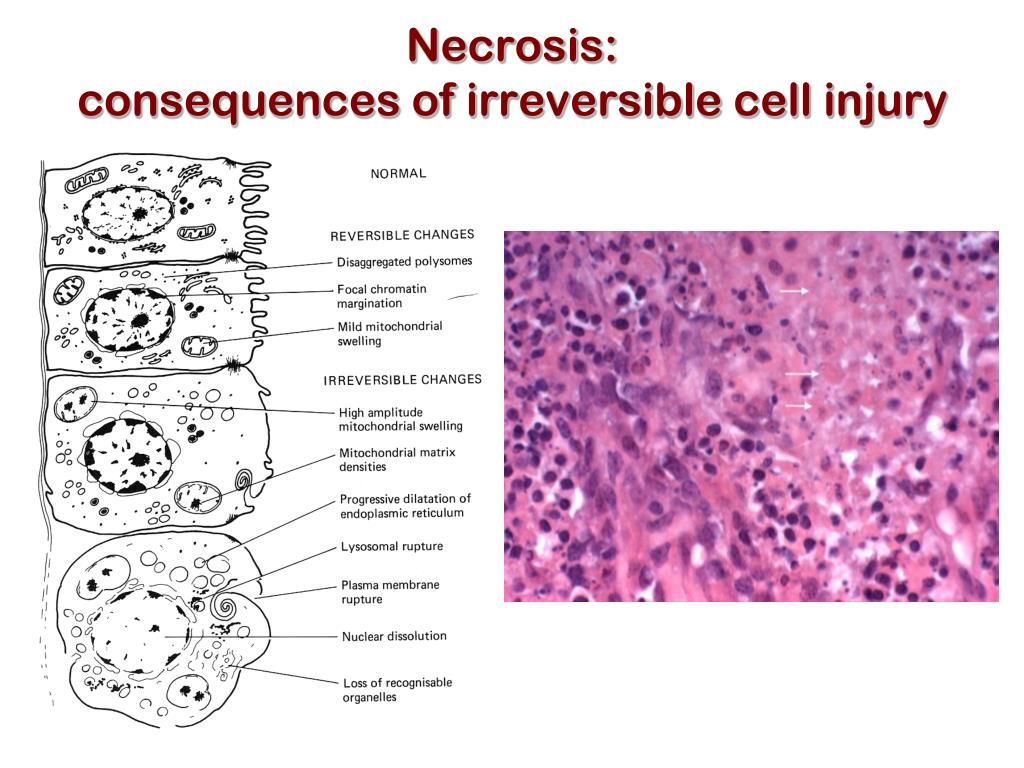
PPT Mechanisms of Cell Death PowerPoint Presentation, free download ID6654737
However, the exact mechanism whereby reversible ischemia finally evolves into irreversible cell death remains a subject of controversy but most likely involves simultaneous loss of a critical amount of ATP,. Role of mitochondria in ischemia/reperfusion-induced cell injury. Opening of the MPT pore in the inner mitochondrial membrane is a.

Pathogenesis of cell injury (mechanism of reversible and irreversible cell injury) Pharmacy Gyan
In normal adult liver, only 0.5 to 1.0% of cells are undergoing DNA replication. After partial hepatectomy, the remaining cells proliferate to replace the lost tissue mass. Hepatocytes begin to divide by 12 hours, and 1 to 2 days later 10% of the cells are synthesizing DNA. Once liver mass is restored, some 1 to 2 weeks later, the rate of DNA.

Morphology of Irreversible Cell Injury YouTube
Definition: Cell injury: Sequence of events that occurs when stresses exceed ability of cells to adapt. Responses are initially reversible, but may progress to irreversible injury and cell death. Cell death: Results when continuing injury becomes irreversible, at which time the cell cannot recover. There are TWO principle types of cell death: 1. Necrosis - […]

Mitochondrial changes in irreversible cell injury YouTube
This disorder in phospholipid metabolism is felt to be the critical lesion that produces irreversible cell injury in ischemia. It affects the endoplasmic and sarcoplasmic reticular membranes of liver and myocardial cells, respectively, and probably the plasma membranes of both. It is prevented by pretreatment with chlorpromazine.
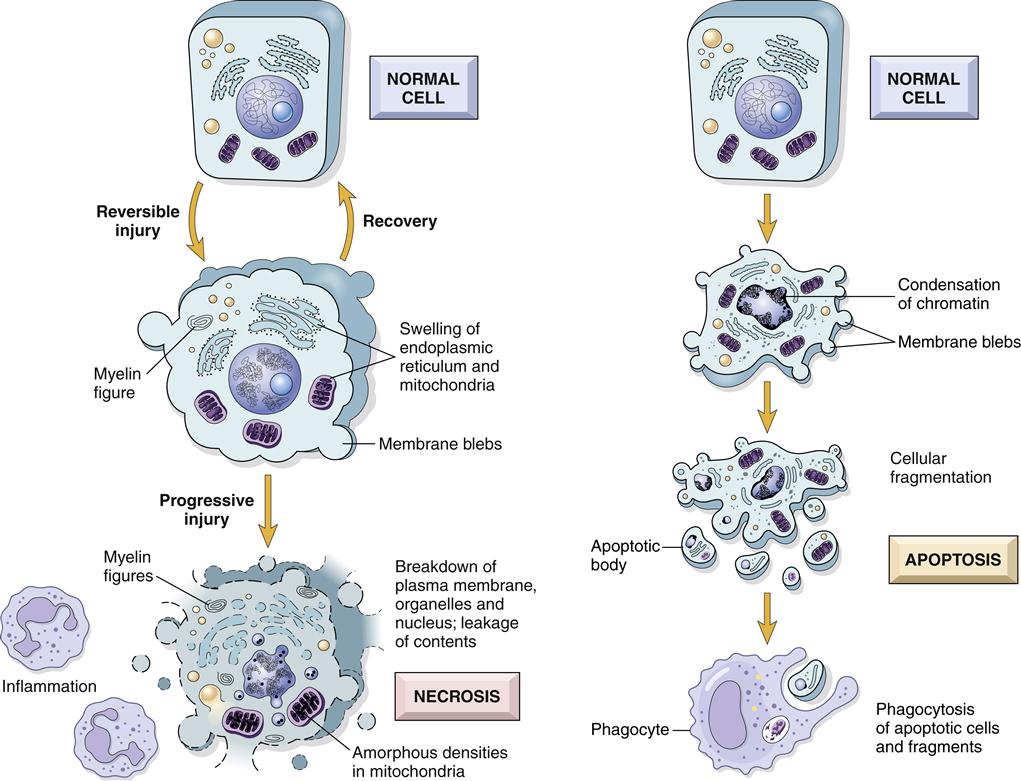
Cell Injury, Aging, and Death Basicmedical Key
Cell Injury. cells respond to stress (e.g., physiologic and toxic) via adaptation to maintain viability and function. when the stressful stimuli is excessive or persistent the cellular damage becomes irreversible and cells undergo. mitochondrial damage can result from hypoxia, reactive oxygen species (ROS), and ↑ intracellular calcium levels.

Reversible and Irreversible Cell Injury YouTube
Cell death. State in which cell ceases to carry out functions. Part of embryogenesis, organ development, and maintenance of homeostasis where damaged and unneeded cells are removed. Effect of irreversible injury. Irreversible Injury Ischemic Cell Damage. , when the cell cannot overcome the damages.

Cell injury. (Subject 2) online presentation
Irreversible cellular injury can be caused by a number of factors and often results in necrosis or cell death. Learn about the causes of cell/tissue injury and the types of necrosis. Create an account

PPT Cell Injury, Death, Inflammation, and Repair PowerPoint Presentation ID1562639
June 30, 2018. by Lakna. 6 min read. The main difference between reversible and irreversible cell injury is that the reversible cell injury can return to the normal conditions by altering the homeostasis of the cell whereas the irreversible cell injury cannot return to the viable conditions as the cell has passed the point of no return.